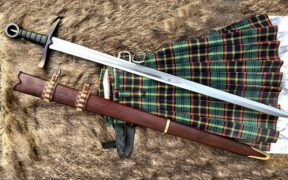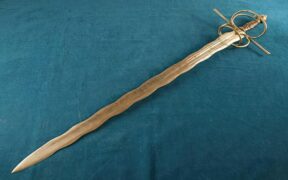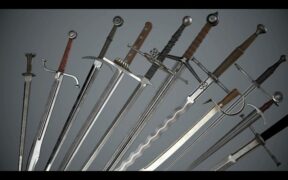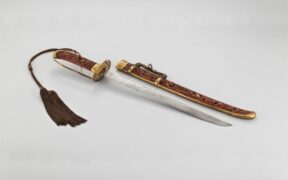Our content features commercial links to our products, committed to transparent, unbiased, and informed editorial recommendations. Learn More
Celtic Sword Types and Their Historical Uses
NO AI USED This Article has been written and edited by our team with no help of the AI
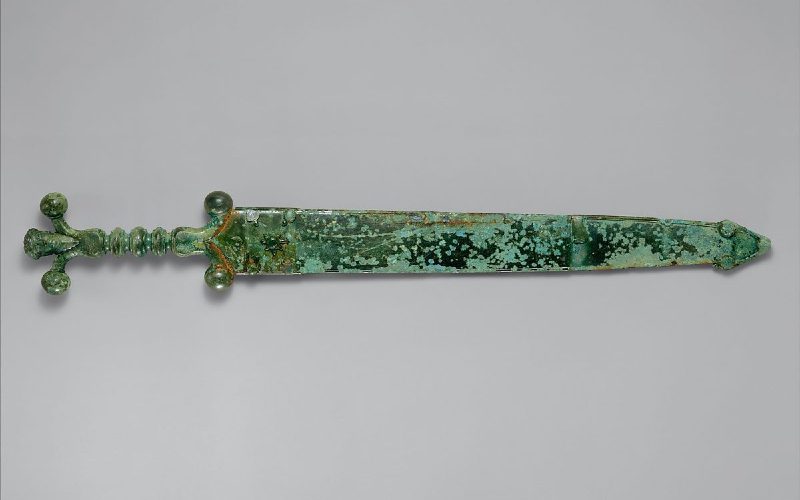
Celtic warriors were renowned swordsmen who used long swords as their principal weapons in raids and warfare. Bronze swords were widely used during the Hallstatt period until the iron swords replaced them. The typical Celtic sword served as a slashing weapon as its rounded tip was not well suited to thrusting.
Let’s explore the history of Celtic swords, their metallurgy, characteristics, and usage.
Types of Celtic Swords
Celtic swords emerged from the late Hallstatt period (around 800 to 450 BCE) to the La Tène period (from 450 BCE to 50 BCE). Named after the archaeological site in Austria, the term Hallstatt generally refers to late Bronze and early Iron Age culture in Europe. On the other hand, the La Tène period, named after the archaeological site in Switzerland, refers to the Late Iron Age culture of the Celts.
1. Celtic Long Sword
The Hallstatt long sword was the predecessor of the later Celtic long swords. In the late Hallstatt period, the two most famous sword types were the Mindelheim and Gündlingen, which the Celts used throughout Europe. In the early 8th century BCE, the bronze Gundlingen sword became popular throughout western Europe, but the heavier iron sword, the Mindelheim type, eventually replaced it.
Gündlingen Type
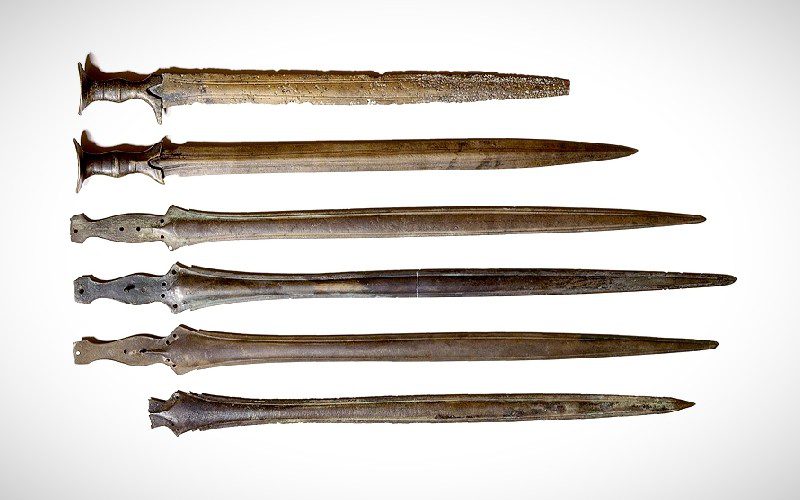
Mostly made of bronze, the Gündlingen type was shorter, plainer, and more common than the other. Most swords had a long slender tip suited for thrusting and fighting on foot, and many featured a bronze antennae pommel. It usually had a length between 70 and 75 centimeters, or even shorter.
Mindelheim Type
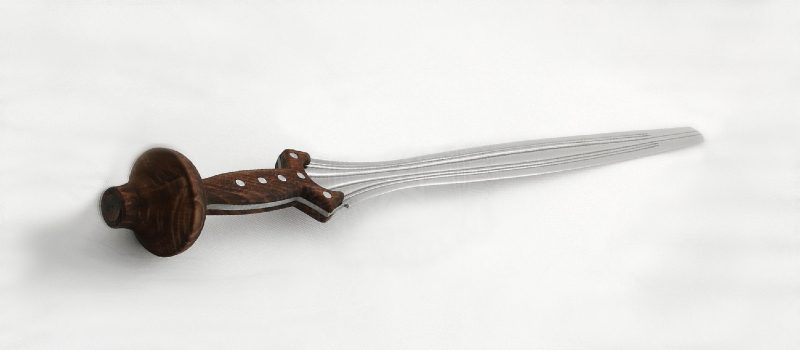
Most recognized by its elaborate leaf-shaped blade and hat-shaped pommel, the Mindelheim-type sword was the last of all bronze swords. It was also the first European sword to transition to iron. Most of their pommels were made of wood, but there were also bronze and ivory. The sword type usually ranged from 80 to 90 centimeters long.
2. Anthropoid Short Sword
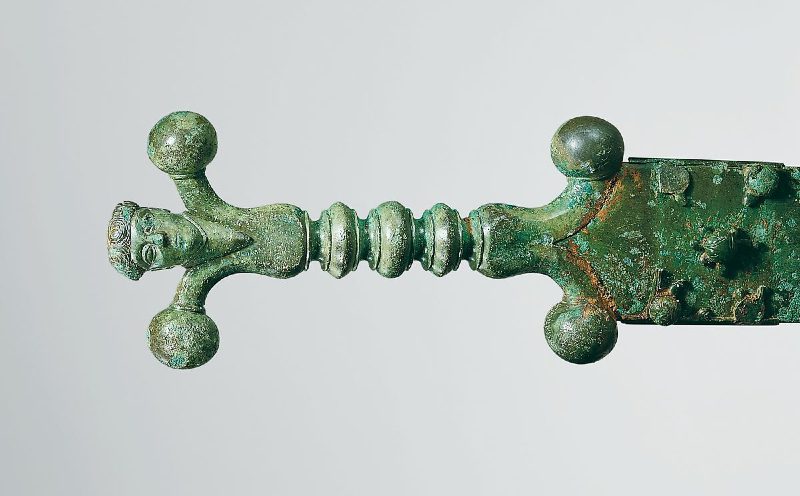
A group of La Tène short swords or daggers are commonly referred to as anthropoid due to their anthropoid hilts, resembling a human figure. The Celtic sword is recognized by its letter X shape, with the upper arms ending in disc buttons, the middle forming the torso, and the lower branches being the legs. The head between the upper arms usually had detailed facial features.
While the Celtic short sword might have been suitable as a personal weapon, distinguishing commanders or warriors of a certain rank, they hardly used it for combat on the battlefield. Many suggest that the anthropoid-hilted short sword served as a status symbol of high-ranking warriors, though its function remains obscure.
3. Knollenknaufschwert or Rapier
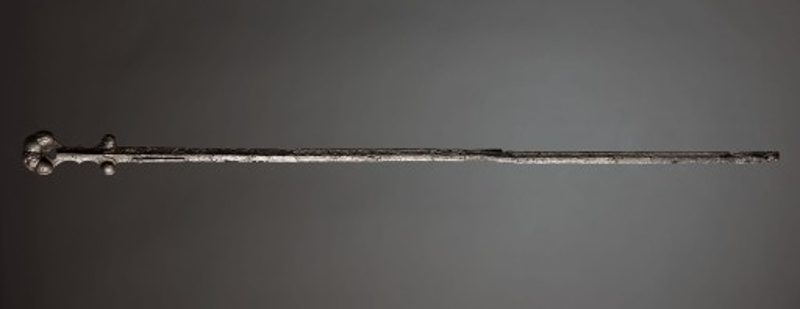
In German archeological literature, the so-called Knollenknaufschwert was a Celtic sword of the Late Hallstatt or early La Tène periods. They were exclusively thrusting swords or rapiers with squared-shaped cross-sections. They were also narrow and extremely long, usually an overall length of 86 to 105 centimeters and a blade length of 73 to 83 centimeters.
The Knollenknaufschwert had iron beads attached to the tang, two on the sword guard and four at the pommel, crowning the hilt. These long rapiers had scabbards constructed from two overlapping iron strips. Some historians suggest that warriors did not use them in combat but only for fencing, duels, or ceremonial purposes.
Characteristics of Celtic Swords
The Celtic swords and their scabbards reflect Celtic metalworking, which was quite sophisticated at the time. Smiths and armorers ensured the most effective use of the materials at their disposal, as many surviving swords feature blade engraving and decorative hilts.
Here are the unique characteristics of Celtic swords:
Metal and Construction
Celtic long swords were initially made of bronze and later of a low-carbon alloy of iron, an early basic form of steel which could not be hardened by quenching. The first long iron swords were copies of bronze originals. Celtic smiths forge-welded several pieces of metal together or twisted and piled them. Such swords were the ancestors of so-called pattern welded blades.
In some accounts, Celtic swords were only efficient in their first cut, as they easily bent, so warriors had to straighten them on the ground with their feet. Only a few Celtic swords had steel-cutting edges. Celtic smiths used the piling technique, which remained in use during the Roman Empire, the Migration period, and throughout the Middle Ages in Europe.
Blade Appearance
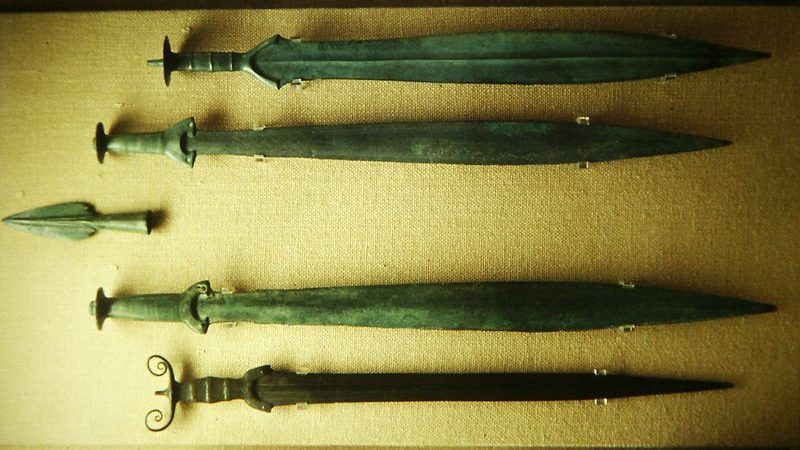
Early Celtic swords generally had double-edged leaf-shaped blades with a narrow waist. By the La Tène period, long swords had straight, parallel sides and a sharp tapering tip. However, blade tips later became rounded, implying that the Celts preferred cutting over thrusting.
Celtic blades often featured punch marks or brass or gold inlays. Some were zoomorphic representations of birds, bulls, and horses, while others were planetary symbols such as solar discs and crescents. Some believe that the punch marks were maker’s marks, but others suggest they were symbols of deities and supernatural forces.
Size and Length
Roman historian Livy described the Celtic sword as very long and appropriate to the warriors’ large physique. Early La Tène swords measured around 40 to 50 centimeters, though longer varieties also existed. By the middle La Tène period, 70 to 85 centimeters long swords were not uncommon, and very long blades over 90 centimeters belonged to the late La Tène period. La Tène period long swords had an overall length ranging from 105 to 130 centimeters.
The length of the Celtic long swords made them efficient for slashing instead of thrusting. Given the metallurgy of the time, the advantage of a shorter sword would be less prone to bending in combat. The Celtic short sword ranged from 29 to 55 centimeters long. Some suggest that it was suitable for thrusting and slashing, though its function remains unclear.
Sword Mounting
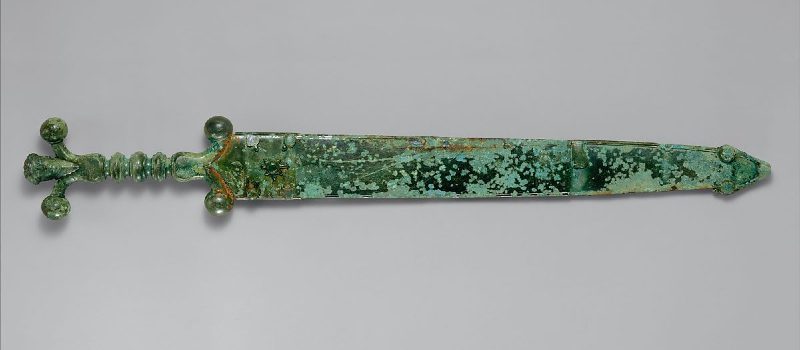
Celtic swords came in various shapes, hilt, and scabbard designs. The Celts are notable for their decorative metalworking skills and their short swords are famous for their anthropoid hilts, resembling a human in form. Swords also featured flared hilts that served as hand guards.
On the other hand, Celtic long swords usually had oval or disk-shaped buttons at the end of the tang. They had a thin and short guard curving on the blade shoulders. Celtic swords from the La Tene period typically had hilts cast in bronze, though they already had iron blades.
Scabbard and Sword Chain
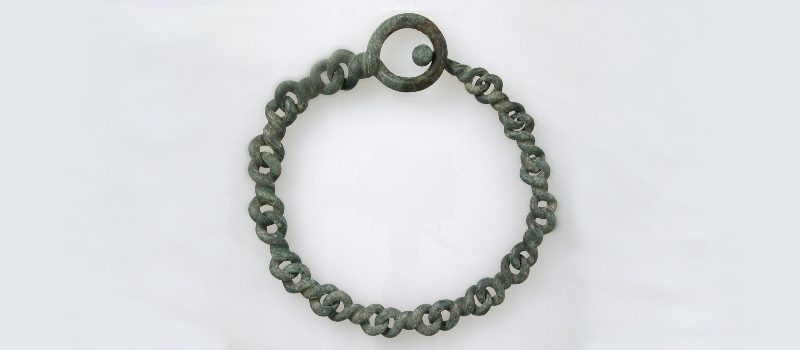
Scabbards were made of metal sheets, usually a combination of bronze, copper, and iron. The scabbard sheets were fastened with decorative mountings and had openwork chapes. Decorations also featured zoomorphic motifs, triquetras or triskeles, spirals, and arabesques.
Celtic scabbards also featured suspension loops which allowed a belt chain or a leather strap to pass through them. The Celtic warriors carried long swords hung on bronze or iron chains and worn along the right side.
History of the Celtic Swords
The Celts were a group of tribal peoples, including the Galatians, Gauls, Britons, and Celtiberians, who spread throughout western Europe from the 2nd millennium to the 1st century BCE. They clashed with the Greeks, Romans, Anatolians, and Carthaginians and used their swords in warfare.
Swords in the Iron Age Europe
The Celts brought iron working to Europe and made the first iron swords around the 7th century BCE. Iron swords of the time were similar to the bronze swords from previous eras and served as the warrior symbol. Some warriors even personalized their swords with elaborate decorations on the blade or scabbard.
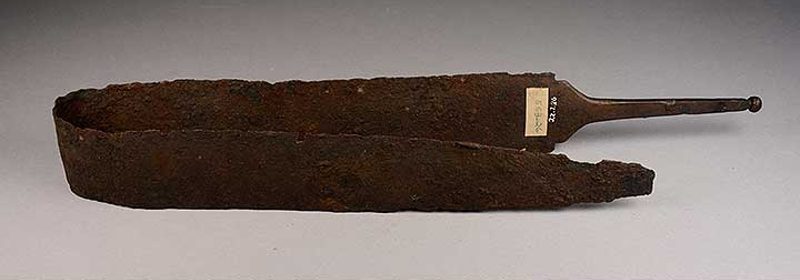
Iron Age blades often bent out of shape and remained deformed. However, they should not be confused with ritually-bent swords found on river beds that served as votive offerings to the gods. Celtic and other Iron Age cultures also had the tradition of bending the weapons of a defeated enemy. Towards the end of the Hallstatt period, daggers replaced the sword and only during the early La Tène period the sword was used again.
Swords in Celtic Warfare
The weapons carried by the Celtic warriors included swords, spears, bows and arrows, throwing clubs, and slings. Most Celts wore long swords hung on their right side, but the Parisii of Yorkshire sometimes wore their swords across the back and drew them over the shoulder from behind the head.
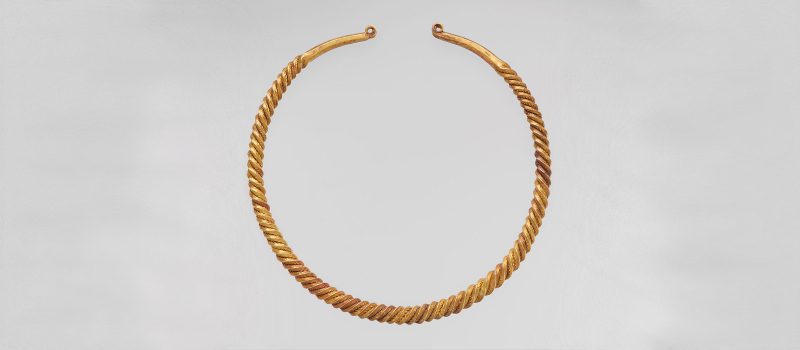
The Gaesatae even fought naked except for wearing the sword belt, gold neck torcs, and armlets, which had a religious significance. However, other Celtic tribes used shields and wore helmets and iron breastplates of chain mail. Some also used daggers as secondary weapons in close-quarters combat.
Development of European Swords
The manufacture of the Celtic sword was significant to the development of medieval swords, or European swords in general. The Celtiberian antenna swords were likely the inspiration for the Roman short sword gladius Hispaniensis. Also, the Roman cavalry spatha evolved from an Iron Age long sword, used by Gallic auxiliary during their Roman service, to a weapon of the Roman Army.
During the Migration period, the Roman spatha remained widely used and later evolved into the Viking sword. By the Middle Ages, the Viking swords evolved into the single-handed arming swords widely used by the crusaders. The Scottish claymore also evolved from Scandinavian one-handed swords from the late Viking Age.
